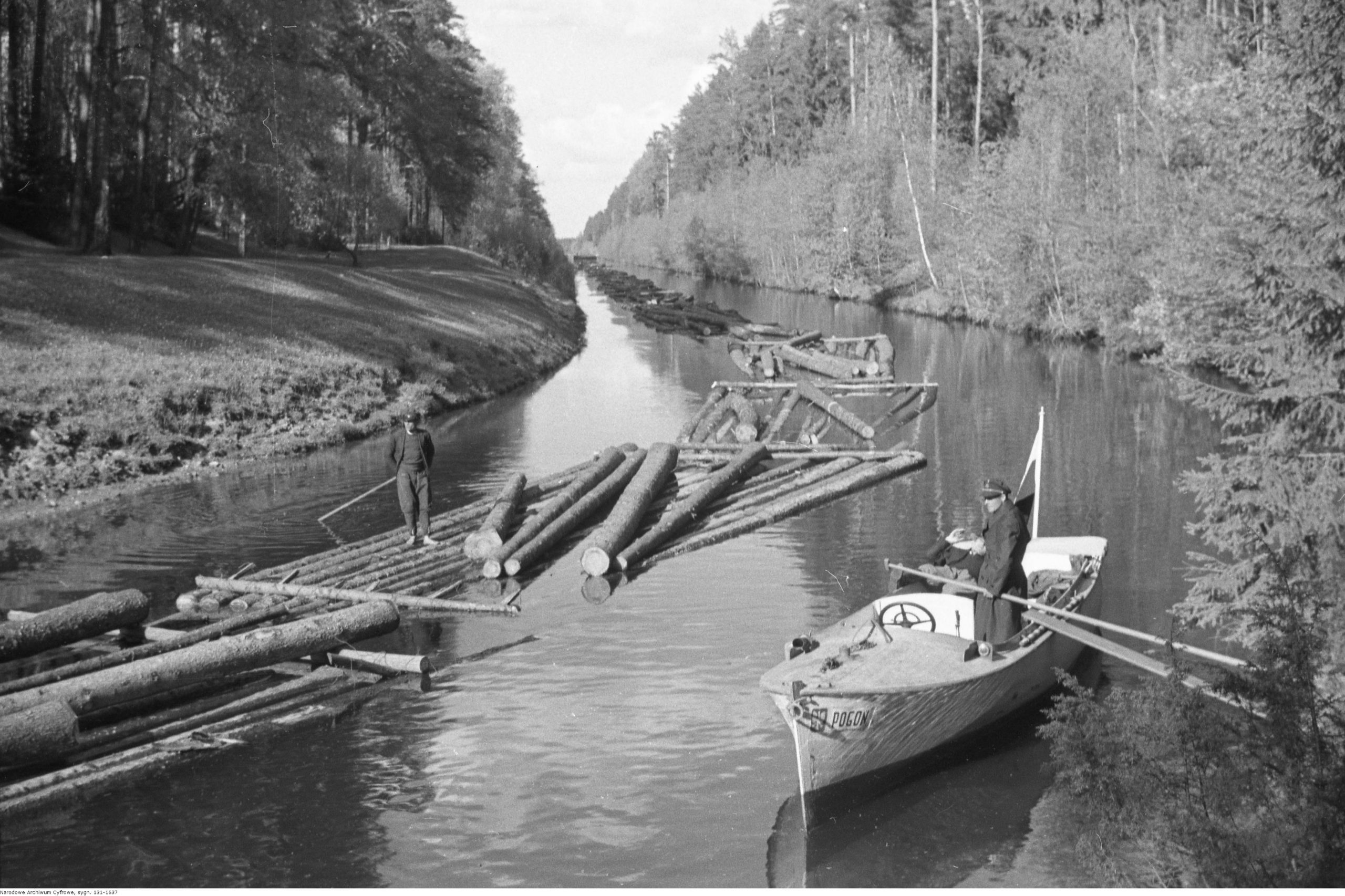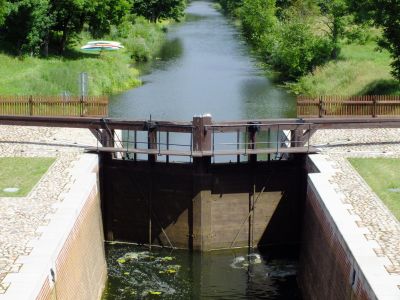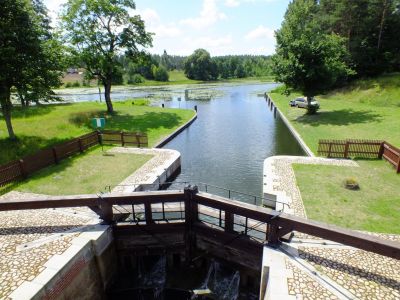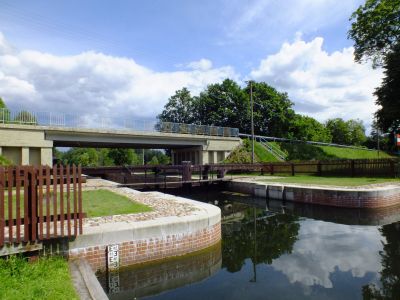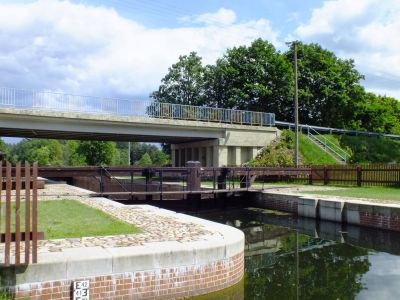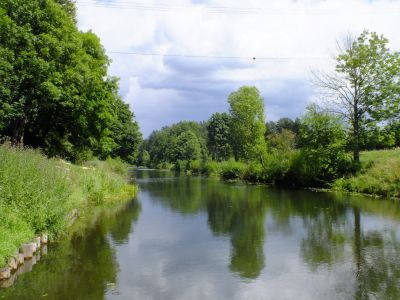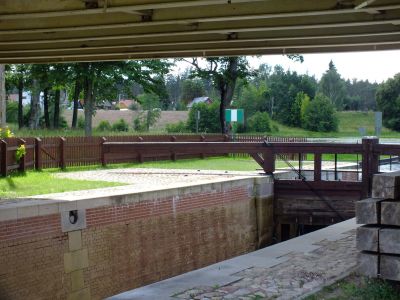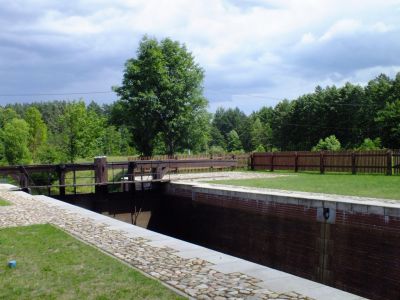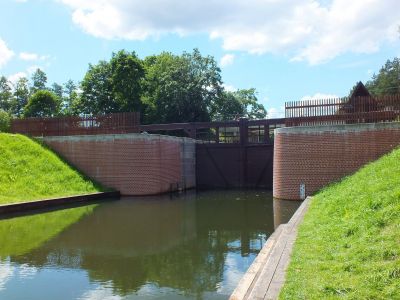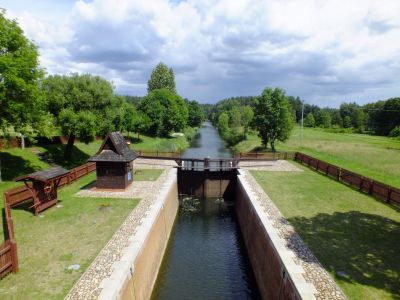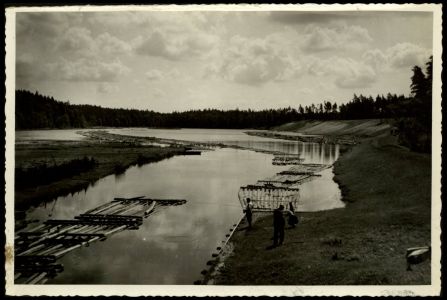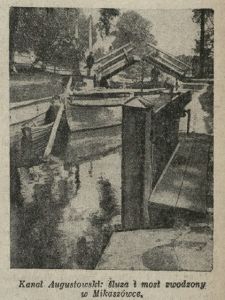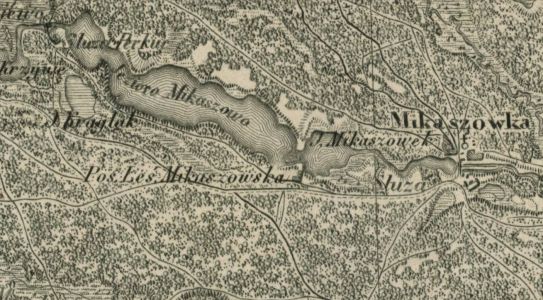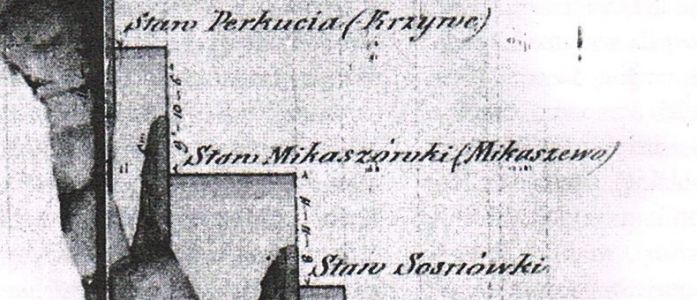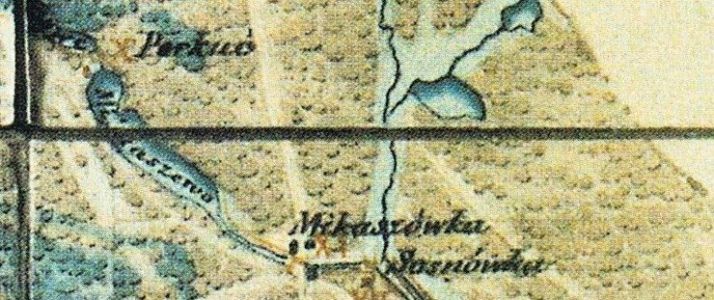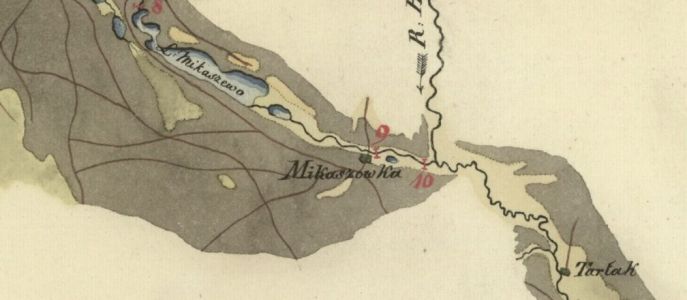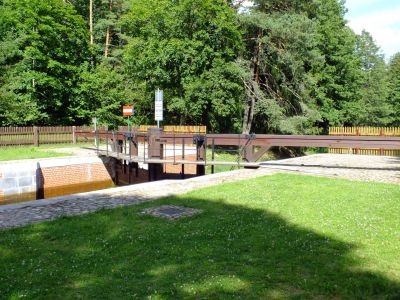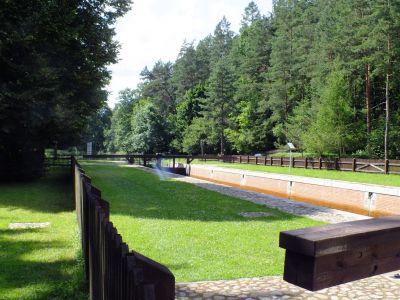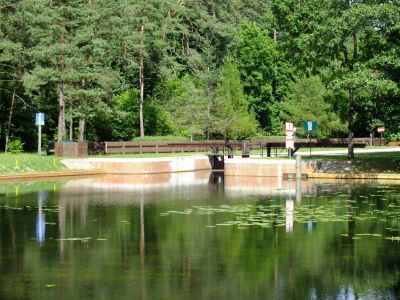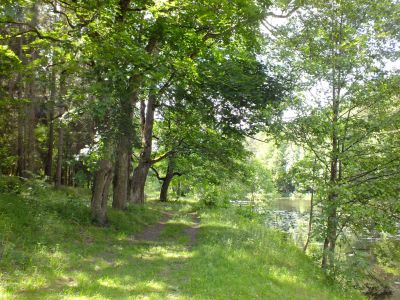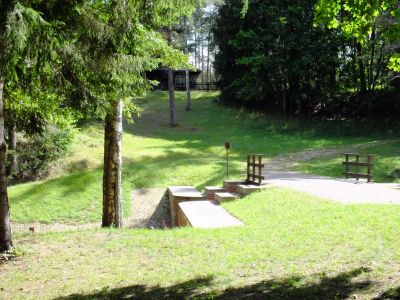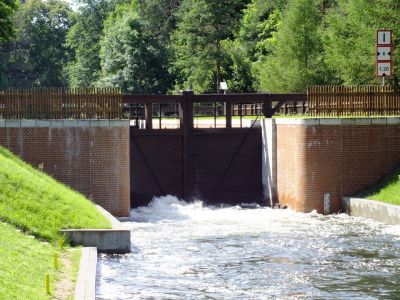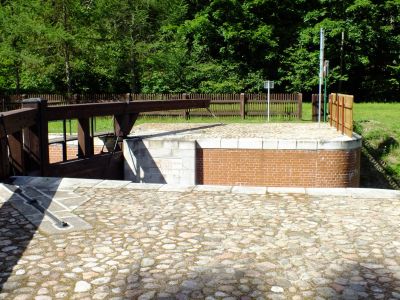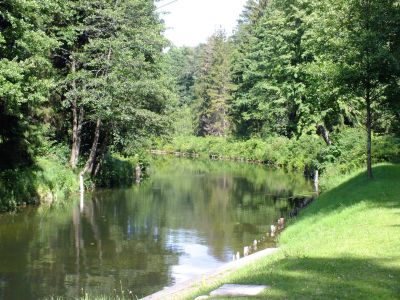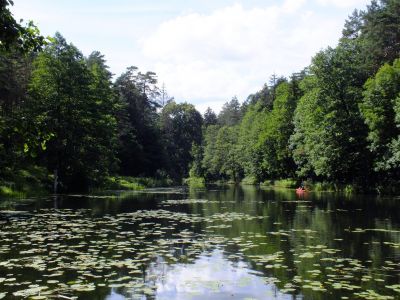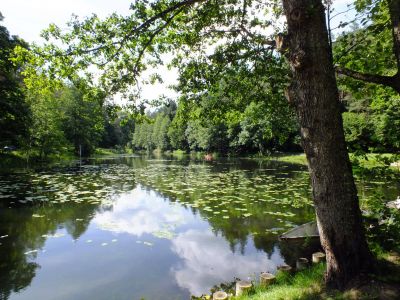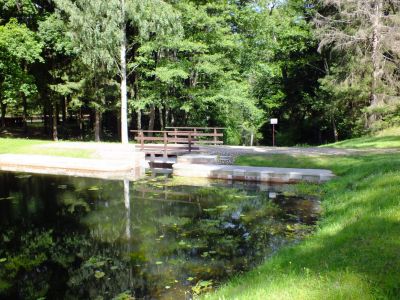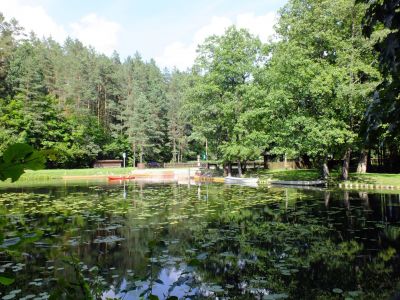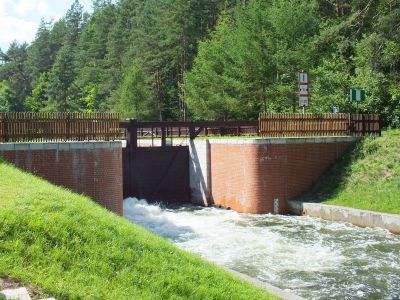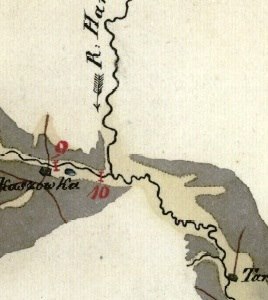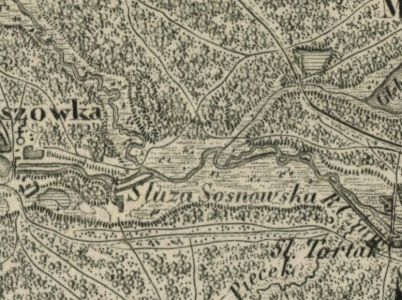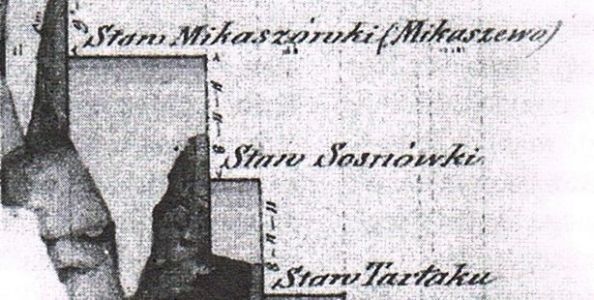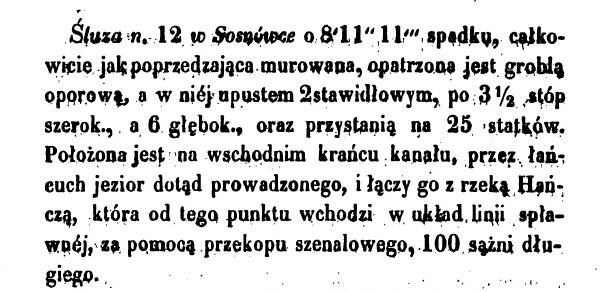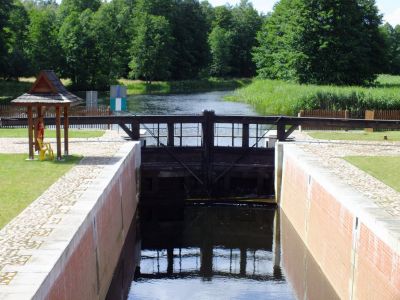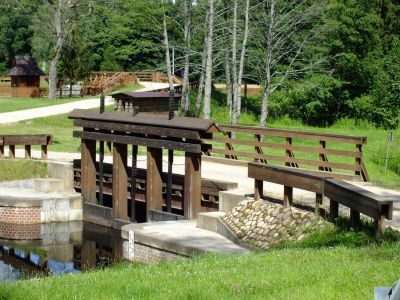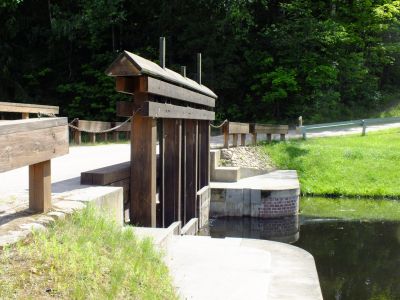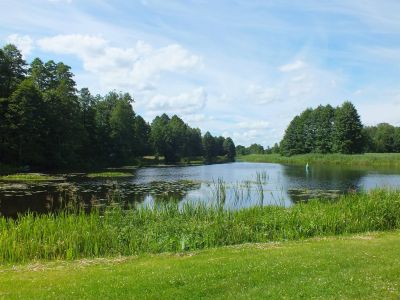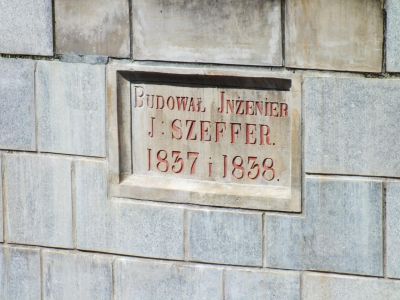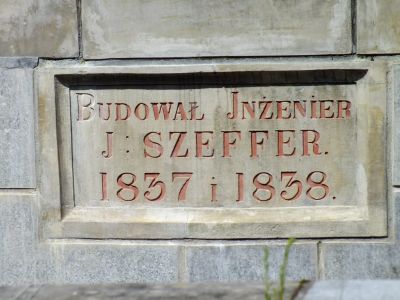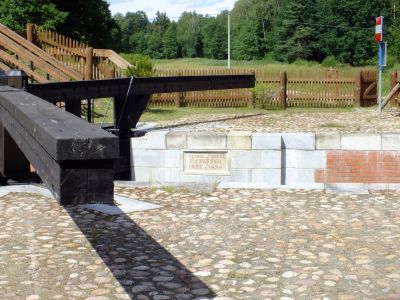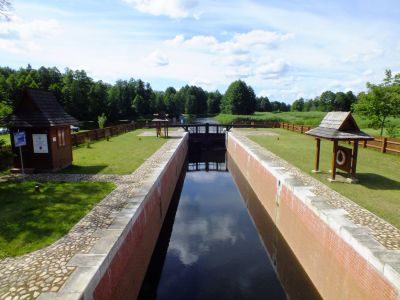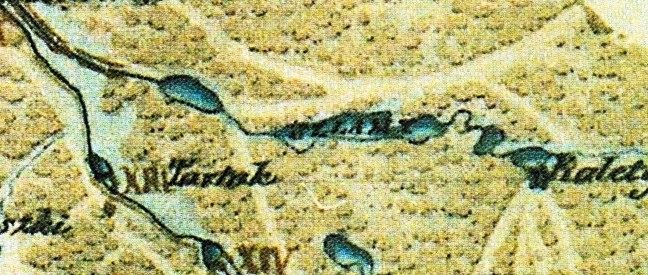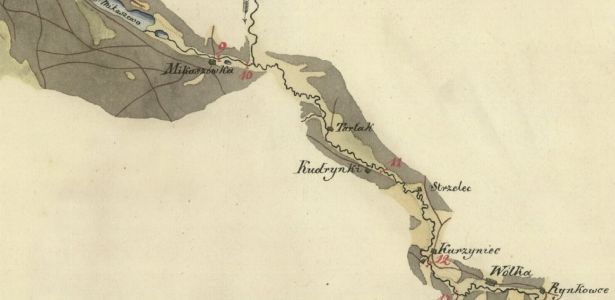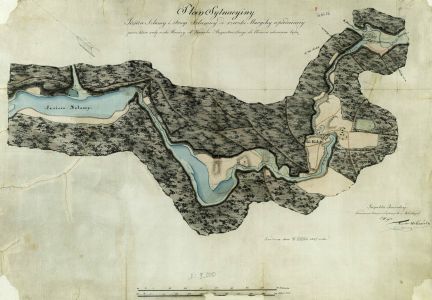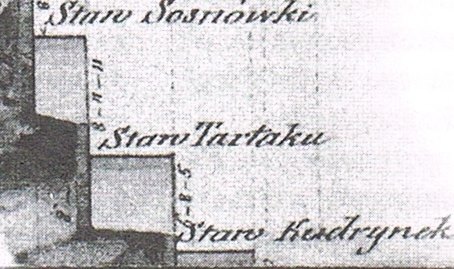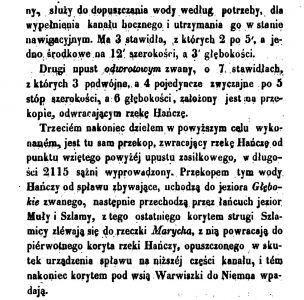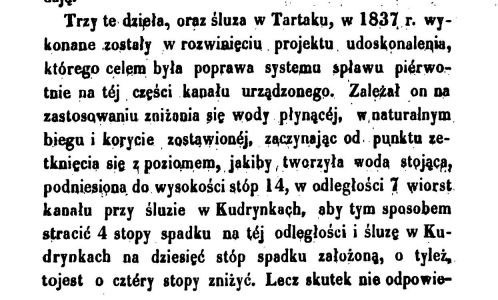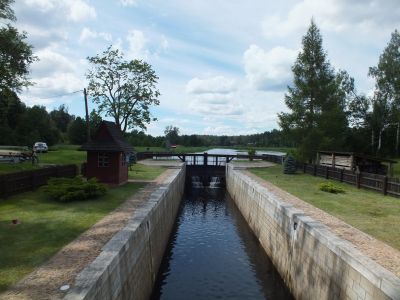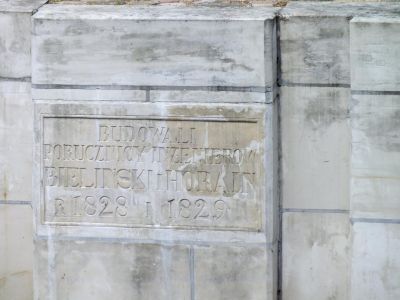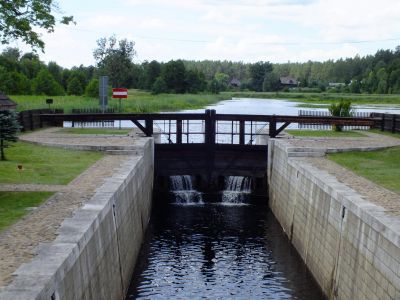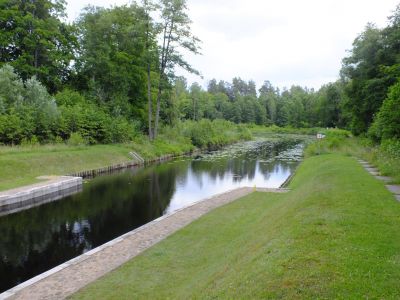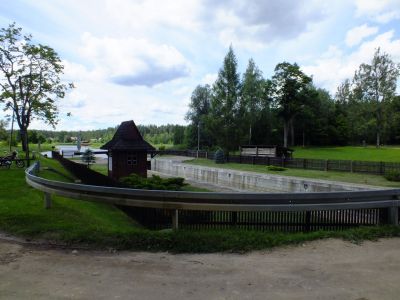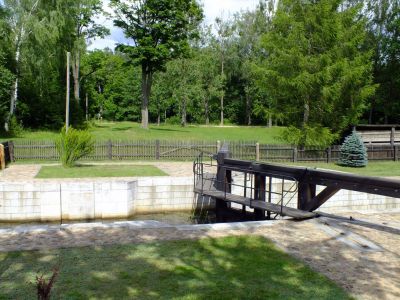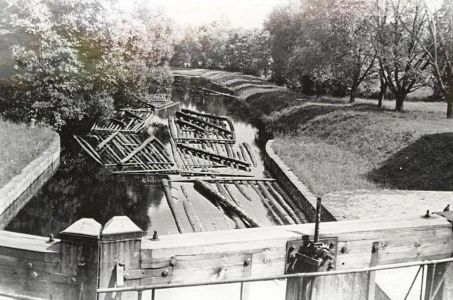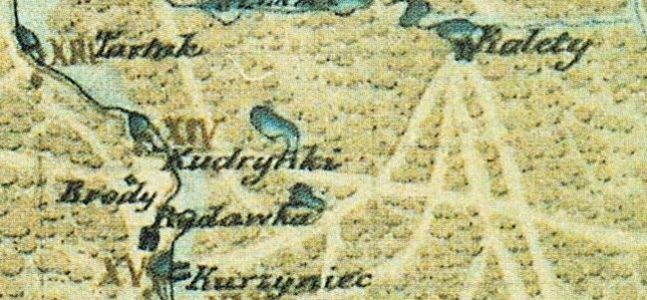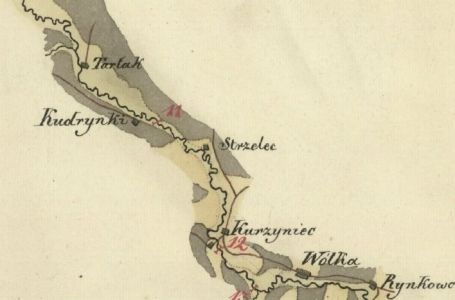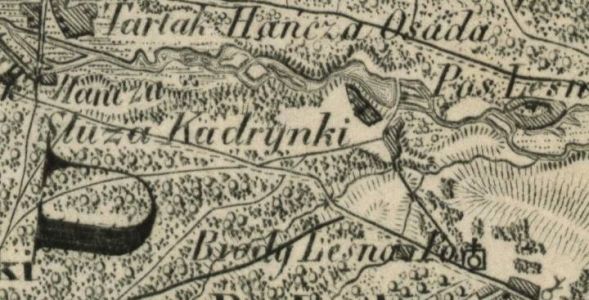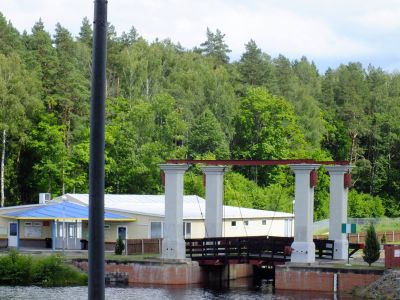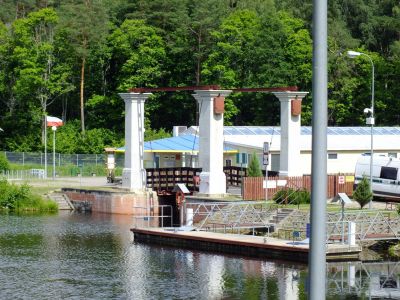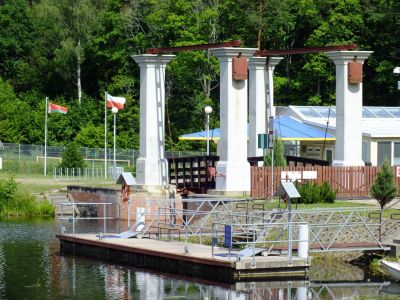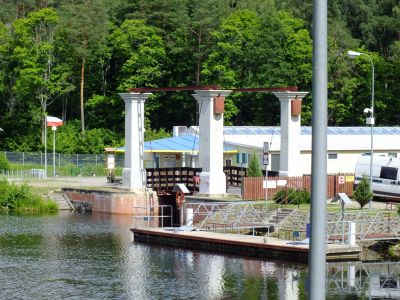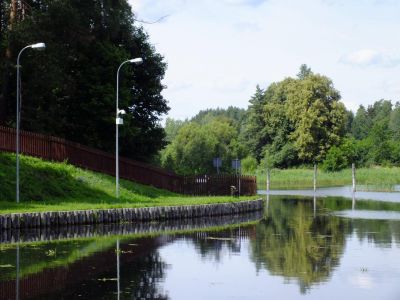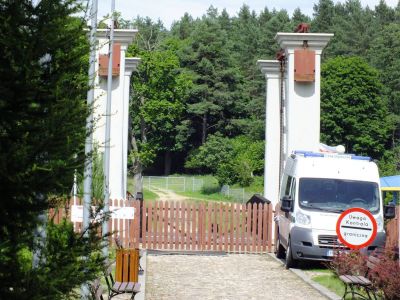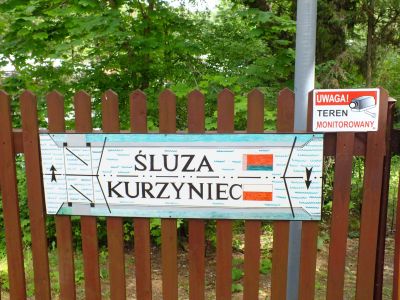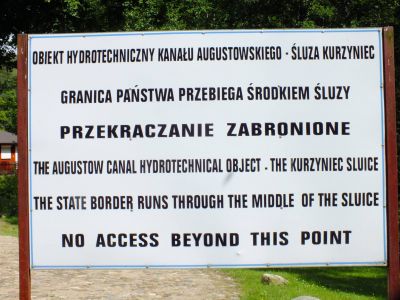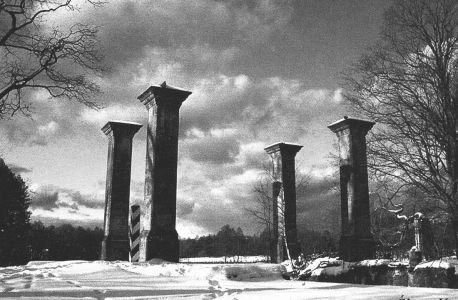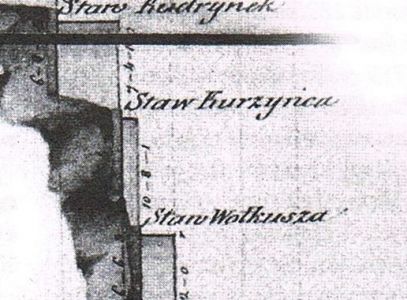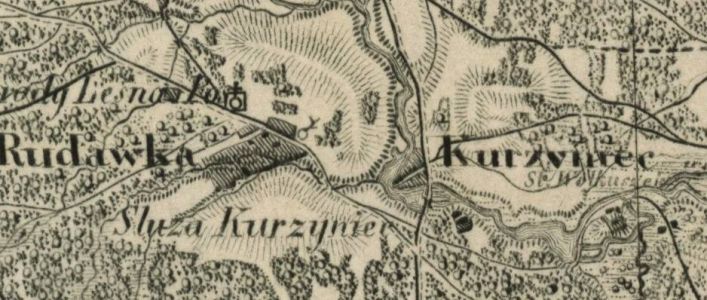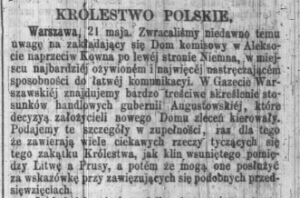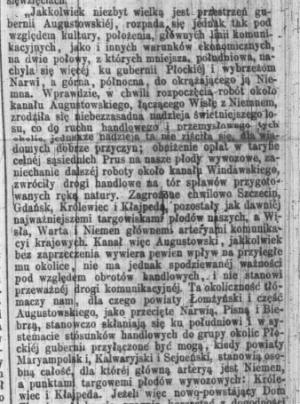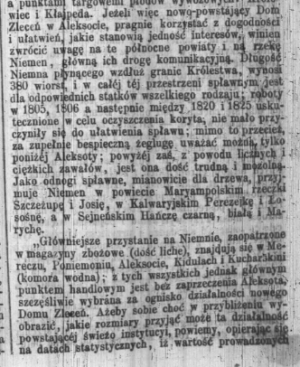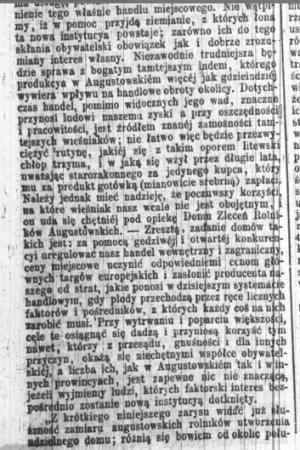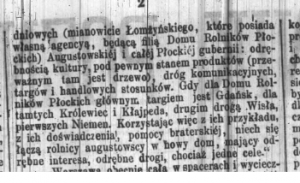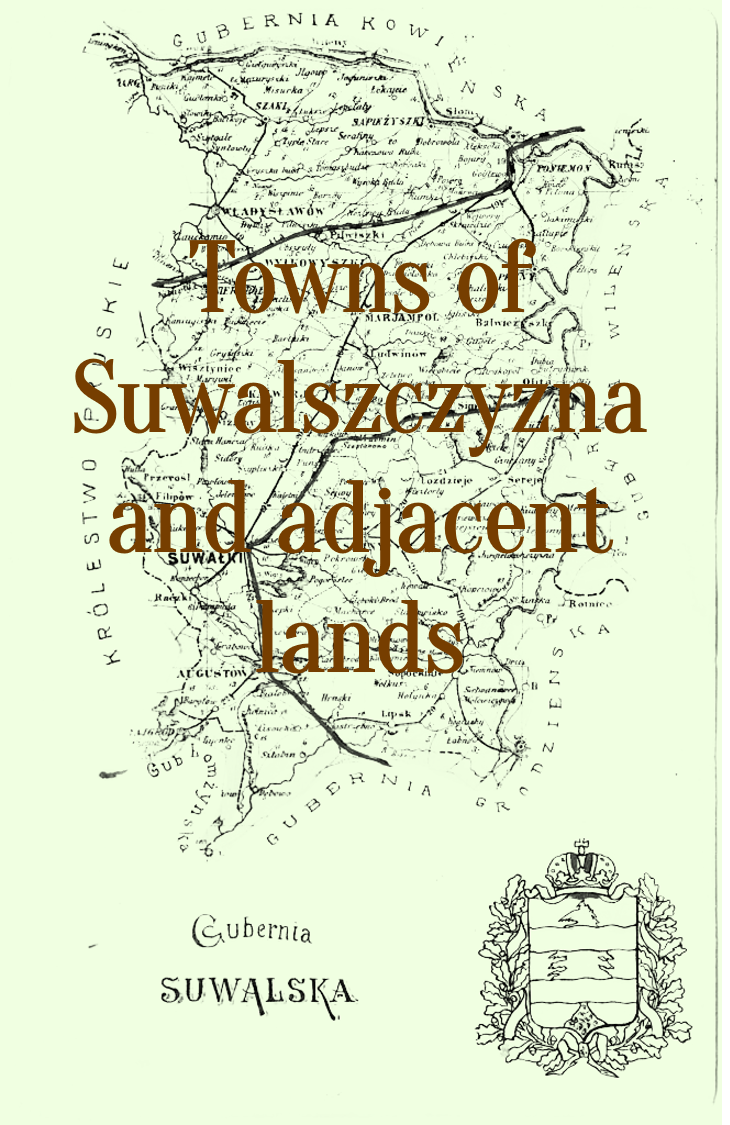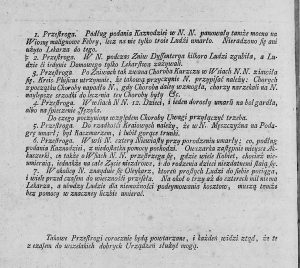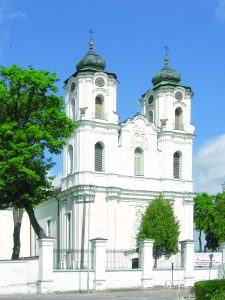Updated:
Mikaszówka Lock
The eleventh lock on the Augustów Canal. It is situated on the 69.1 km counting from the Biebrza side. The concrete-brick structure, the chamber dimensions are 43.31 x 6.05 m, the level difference is 2.44 m. A 2.5 m high bridge passes over the lock along the local road. Around the lock there is the village of Mikaszówka, which dates back to the mid-seventeenth century. Before the lock, the channel passes through the complex of Mikaszowskie Lakes (L. Mikaszewo and L. Mikaszówek).
Sosnówek Lock
The twelfth lock on the Augustów Canal, located on 71.2 kilometer of the channel, counting from the Biebrza side. It connects the artificial part of the canal with the section running along the canalized riverbedl of Czarna Hańcza. Built in 1828 by Lieutenant Eng. Konstanty Jodko. The lock length is 44.40 m, width is 6.10 m, and the level difference is 2.98 meters.
Tartak Lock
The thirteenth lock on the Augustów Canal, located at 74.4 km, counting from the Biebrza side. (This section of the canal is a regulated riverbed of the Hańcza river) Originally it was not planned. Its construction was necessary because during high water levels dammed water destroyed hydrotechnical devices. The project was amended by civil engineer Teodor Urbański, probably after consultations with General Ignacy Prądzyński. An auxiliary channel was also built then, draining excess water to the Szlamica River near Rygol. The lock was built in the years 1837-1838 by Ing. Jakub Szeffer. The lock's length is 45.35 m, width 6.08 m, and the level difference is 1.72 m. On the auxiliary channel there is a chandor (valve) drain.
Kudrynki Lock
The fourteenth lock on the Augustów Canal (counting from the side of Biebrza located on 77.4 kilometer). Built in 1828-1829 by Edward Tadeusz Bieliński and Michał Horain. One-chamber lock with a length of 43.4 m, width: 5.94 m. Closed from the end of World War II until a major renovation in 2005-2008. The border of Poland runs through the middle of the channel section behind the lock.
Kurzyniec Lock
Jest to piętnasta, graniczna śluza, przez środek której przebiega granica polsko-białoruska. Śluza zbudowana została przez Konstantego Jodko i Fryderyka Wielchorskiego w 1829 roku. Dawniej po drugiej stronie śluzy, którą pokonywało się przez most zwodzony, znajdowała się wieś Kurzyniec. Założona została przed rokiem 1645 jako niewielka osada rudników. W 1688 osadę zwano Rudą na Hańczy, zaś w XIX wieku była siedzibą strażnika leśnego. W roku 1939, po wkroczeniu Rosjan, mieszkańców prawdopodobnie wywieziono lub zastrzelono. Ponoć jeszcze teraz nad brzegiem Kanału znajduje się czasem ludzkie kości. Obecnie po wiosce nie pozostał żaden ślad, a pola uprawne zarosły lasem. Tak opisano wieś Kurzyniec w Słowniku Geograficznym Królestwa Polskiego: “Kurzyniec 1.) wś rząd., pow. augustowski, gm. Wołowiczowce, par. Teolin. Leży nad Kanałem Augustowskim, śród lasów sosnowych, na piaskach; chaty nędzne, ludność uboga, żyje z rybołówstwa, pędzenia smoły, sieje grykę. Jest tu 10 dm. W 1827 r. 12 dm., 76 mk. Spis urzędowy miejsc. gub. suwalskiej “
Dziennik Poznański, #120/1860
In connection with the opening of the commission house in Aleksota, an article appeared in Dziennik Poznański, No. 120 from 1860, describing why the Augustów Canal never attained the significance attributed to it during design and construction. But there is a lot of information about the economic situation of the Augustów Governorate, the main export goods. The author also suggests that the economic situation could be improved by the creation of the House of Orders for Augustów Farmers. Was there one like this?

